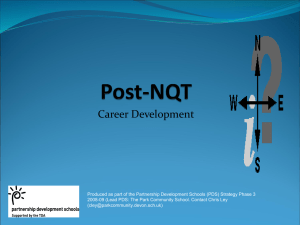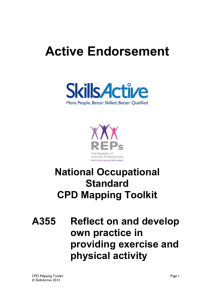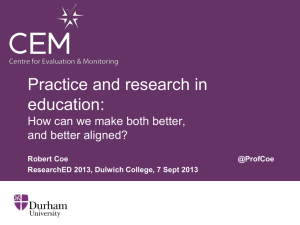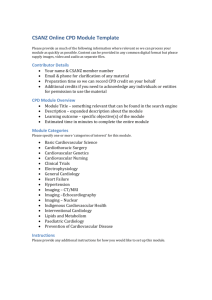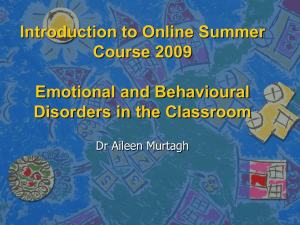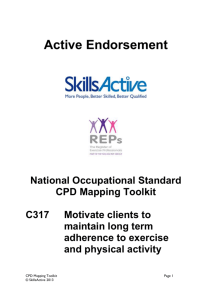SLMS CPD Online assessment to enhance learning
advertisement
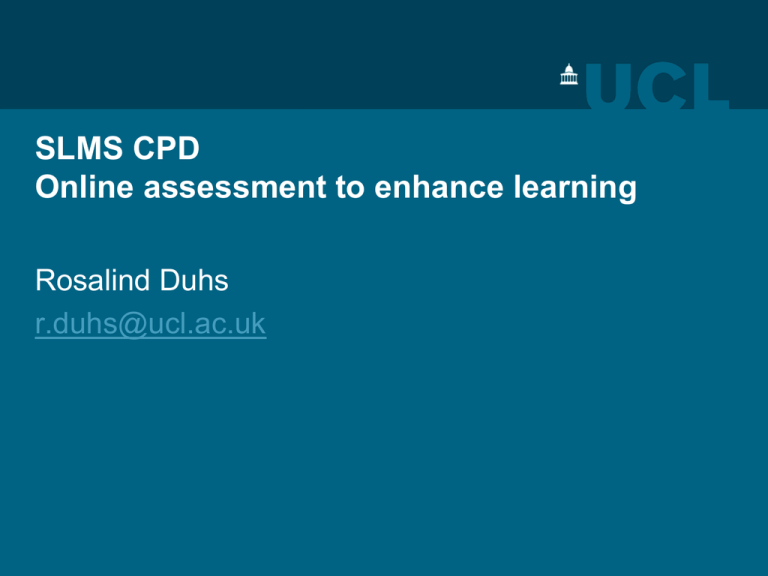
SLMS CPD Online assessment to enhance learning Rosalind Duhs r.duhs@ucl.ac.uk The brief: produce a toolkit for assessment to enhance distance learning Introductions • Name • Role • Interest in /experience of designing online assessment for CPD • Any concerns? Workshop intended outcomes By the end of the session, participants should be able to: • Use the SLMS CPD online assessment toolkit to design formative and summative assessment • Adapt the toolkit to their own context Rough plan of session • Background, evidence and toolkit (~20 mins) • Participants design formative and summative assessment of learning outcome/s (~15 mins) • Presentation and discussion of participants’ assessment designs and suggestions for redesign of toolkit (~20 mins) Why focus on assessment? Assessment shapes learning: Backwash Online CPD: identifying the problems and overcoming them with good assessment design Build an enticing web of online learning Multiple modes of online communication for feedback and learning Skype Chat Problem 1 CPD doesn’t always result in learning which is successfully applied in practice (Zukas 2012) Solution Link assessment tasks to practice (blogs, videos, learners’ cases) Problem 2 Learners feel isolated ’The loneliness of long-distance learner’ Solution (Duranton 2012) Create an online community of practice by getting learners to comment on each other’s work (peer feedback on drafts, blogs, logs, informal accounts of cases, worldwide case exchange forum) Problem 3 CPD drop out rates are high 20% to 70% (Park & Choi 2009) Solution Provide regular encouraging feedback (quizzes, short answers, logs, blogs) Use peer learning and feedback (texts, videos, audio) Problem 4 In practice-oriented subjects like medicine… education … must be delivered by and large through face to face conventional method.’ (Arunachalam 2001) How can we assess practice online? Problem 5 In practice-oriented subjects like medicine… education … must be delivered by and large through face to face conventional method.’ (Arunachalam 2001) How can we assess practice online? 360° feedback? Video with Q & A? ‘The parrot test’ (Hunt and Chalmers 2012 p.99) Planning aligned assignments/assessment methods Teaching and Learning Activities Learning outcomes Assessment methods Learning outcomes, learning activities and assessment are tightly linked. Conclusion We need to be realistic about what we can teach and assess in an e-learning environment. Distance learners need extra drive (support). Careful detailed planning is needed and takes time. Introducing the draft toolkit Workshop activity: use the toolkit Planning assessment for your distance CPD course 1. Select/write a learning outcome 2. Plan how you/peers can provide feedback to support learning (formative assessment tasks) 3, Plan how you’ll assess the outcome for final course marks (summative assessment task/s) References and further reading Hrastinski, S., Keller, C. & Carlsson, S. A. (2010) Design exemplars for synchronous e-learning: A design theory approach. Computers & Education, 55(2), 652-662. Hunt, L. & Chalmers, D. (2012) University teaching in focus: A learningcentred approach, (Acer, Victoria and Routledge). Park, J.-H., & Choi, H. J. (2009). Factors Influencing Adult Learners' Decision to Drop Out or Persist in Online Learning. Educational Technology & Society, 12 (4), 207–217. Seagull, F. J. (2012) Human factors tools for improving simulation activities in continuing medical education. Journal of Continuing Education in the Health Professions, 32(4), 261-268. Zukas, M. (2012) Regulating the professionals: Critical perspectives on learning in continuing professional development frameworks, in: D. Aspin, J. Chapman, K. Evans & R. Bagnall (Eds) Second international handbook of lifelong learning. Dordrecht, Heidelberg, London, New York, Springer), 455.
